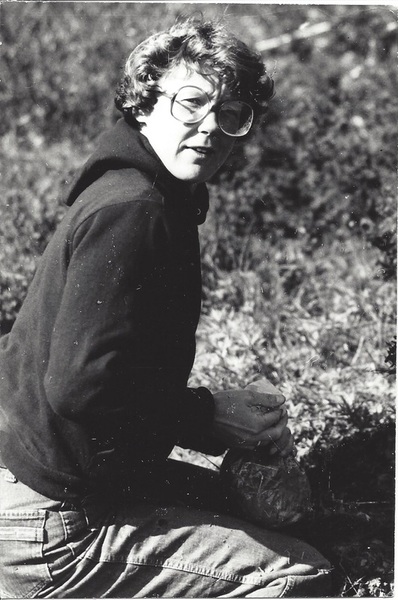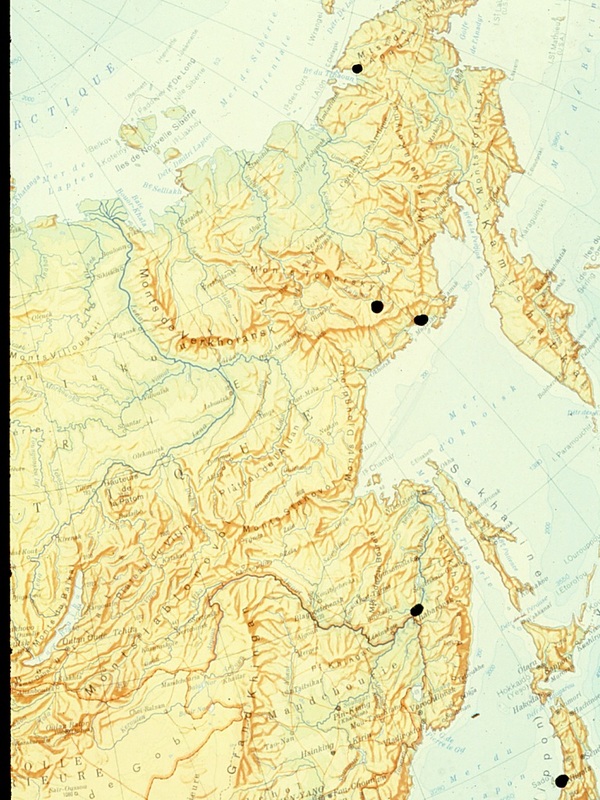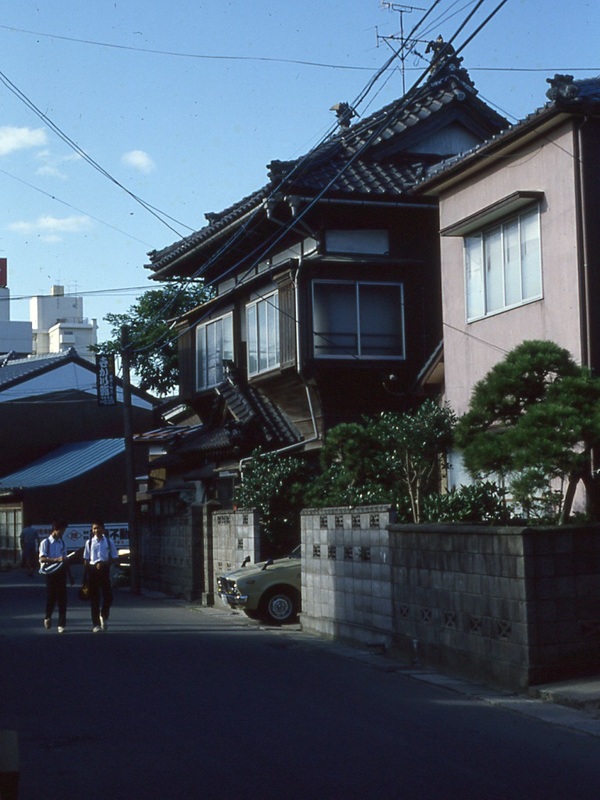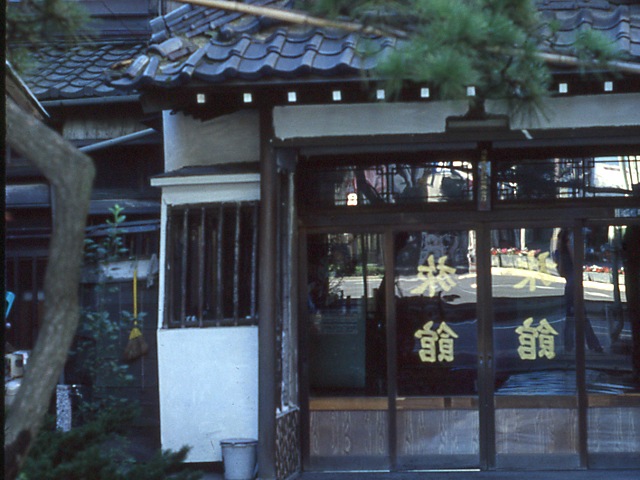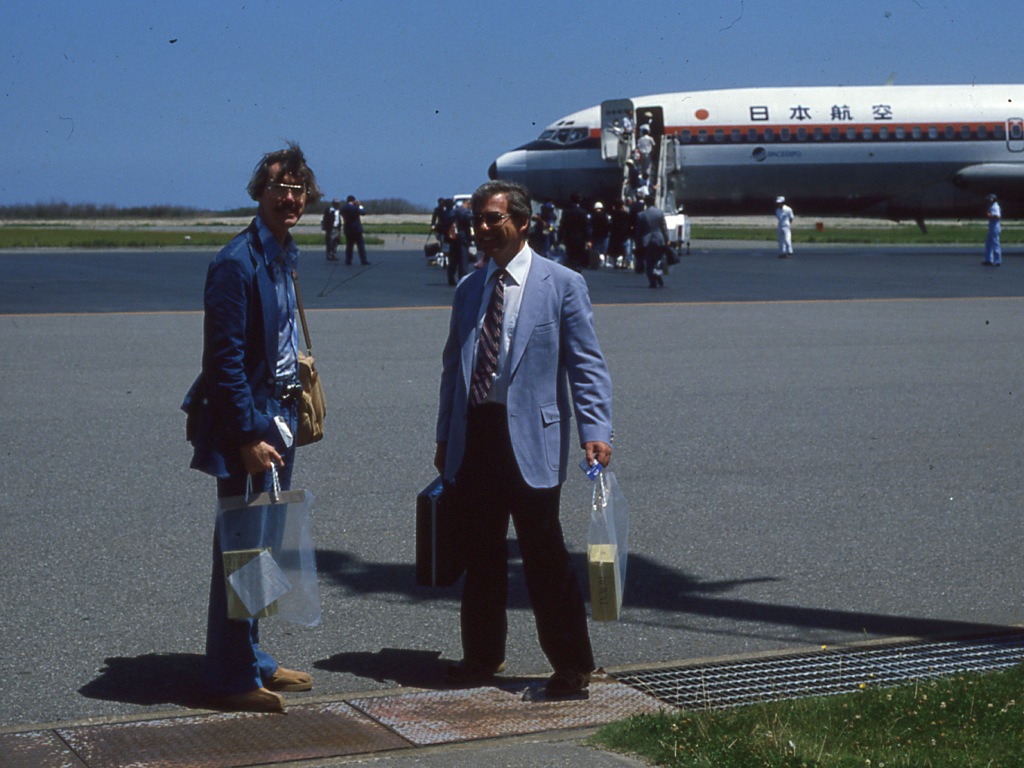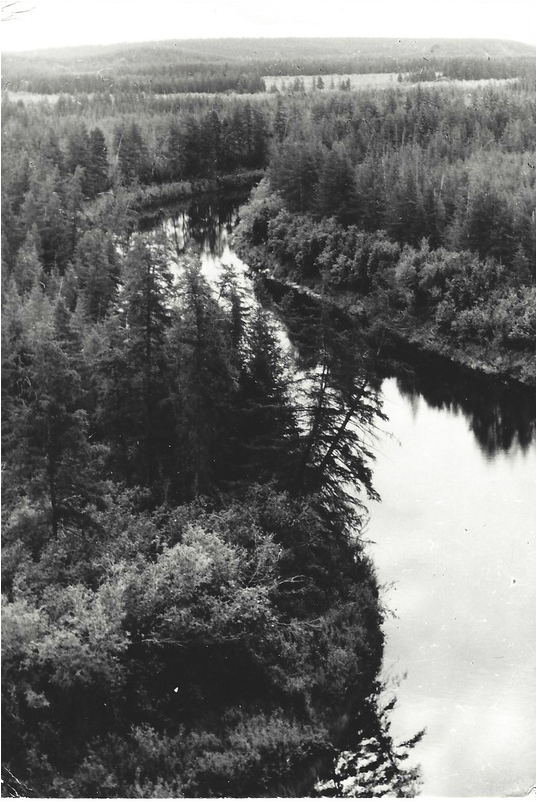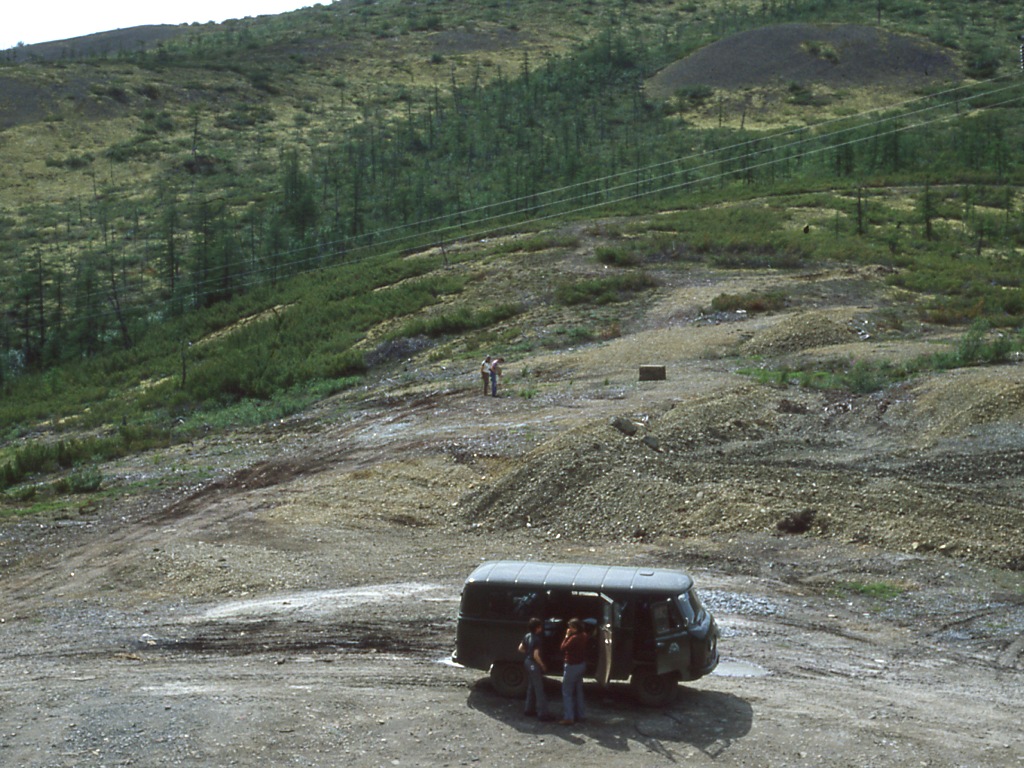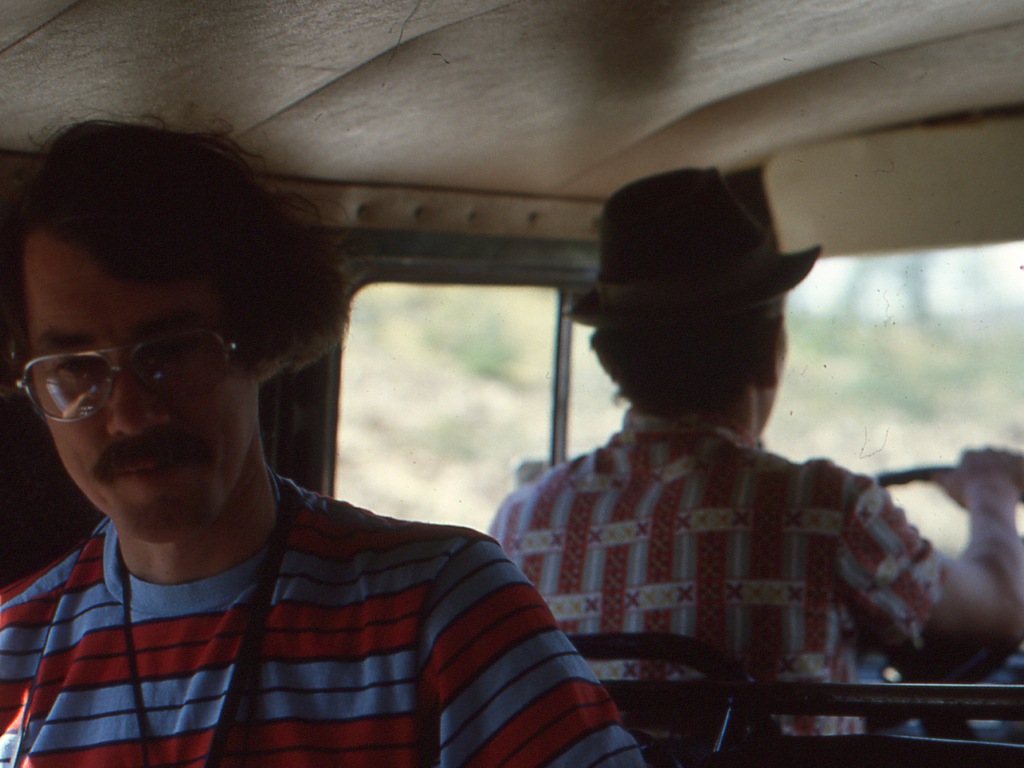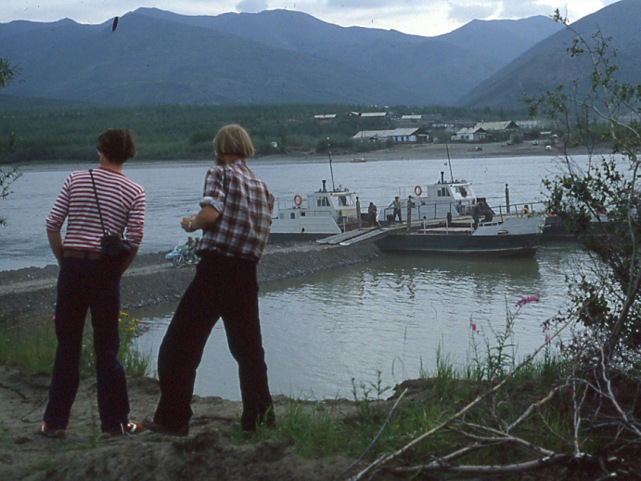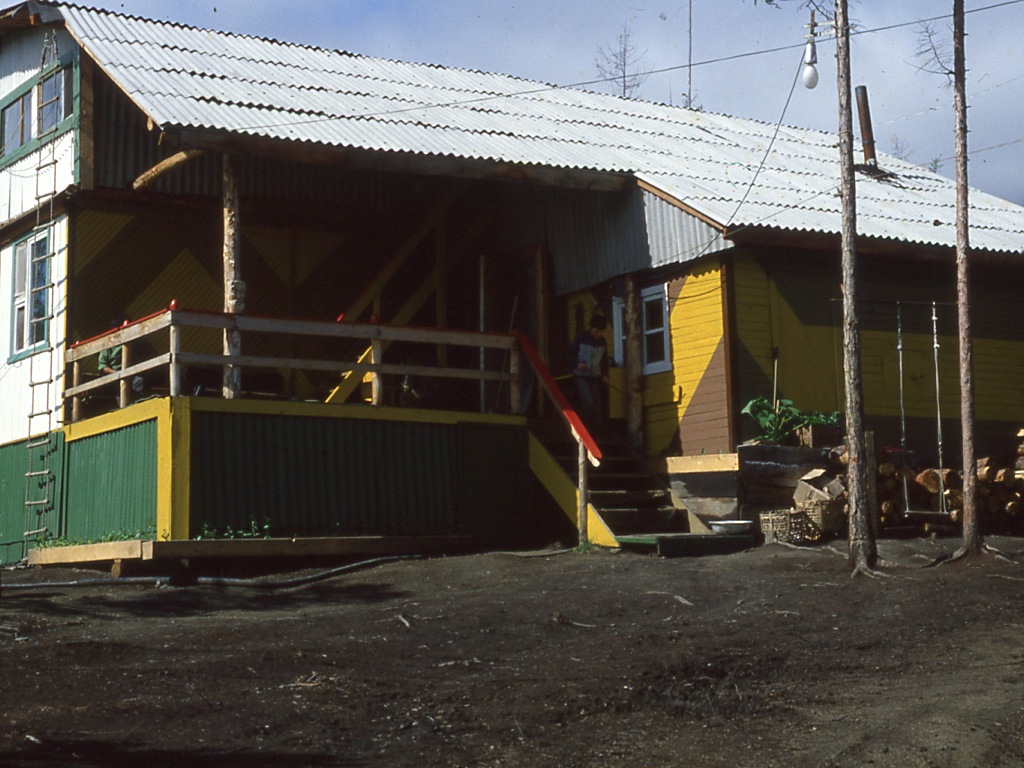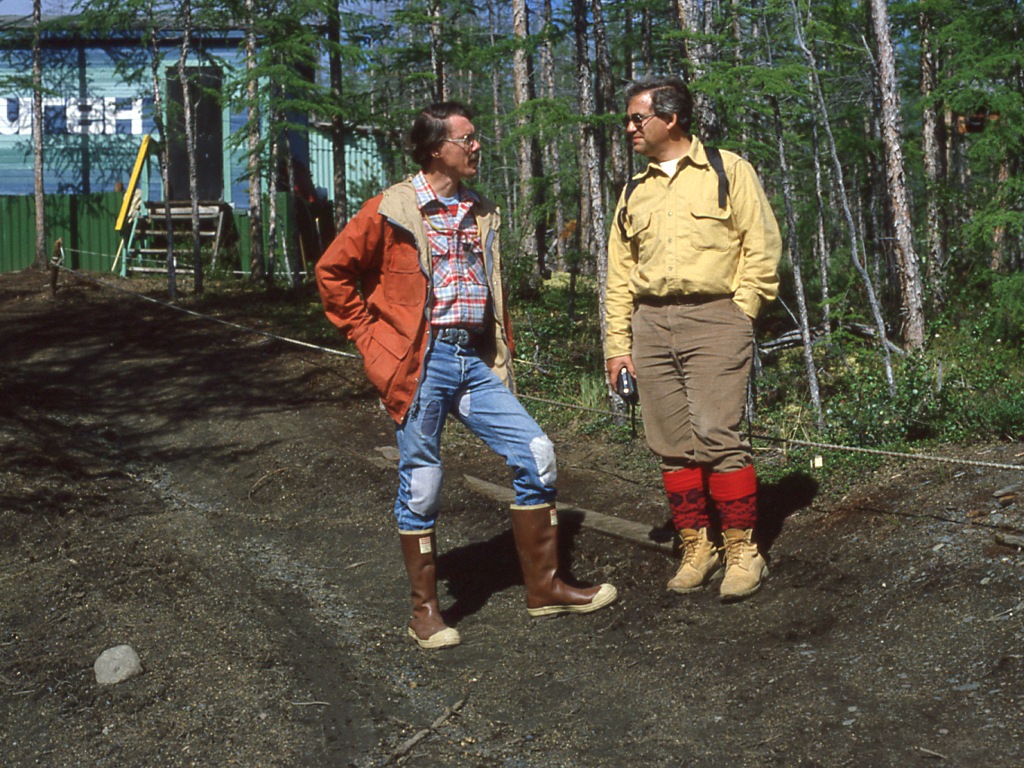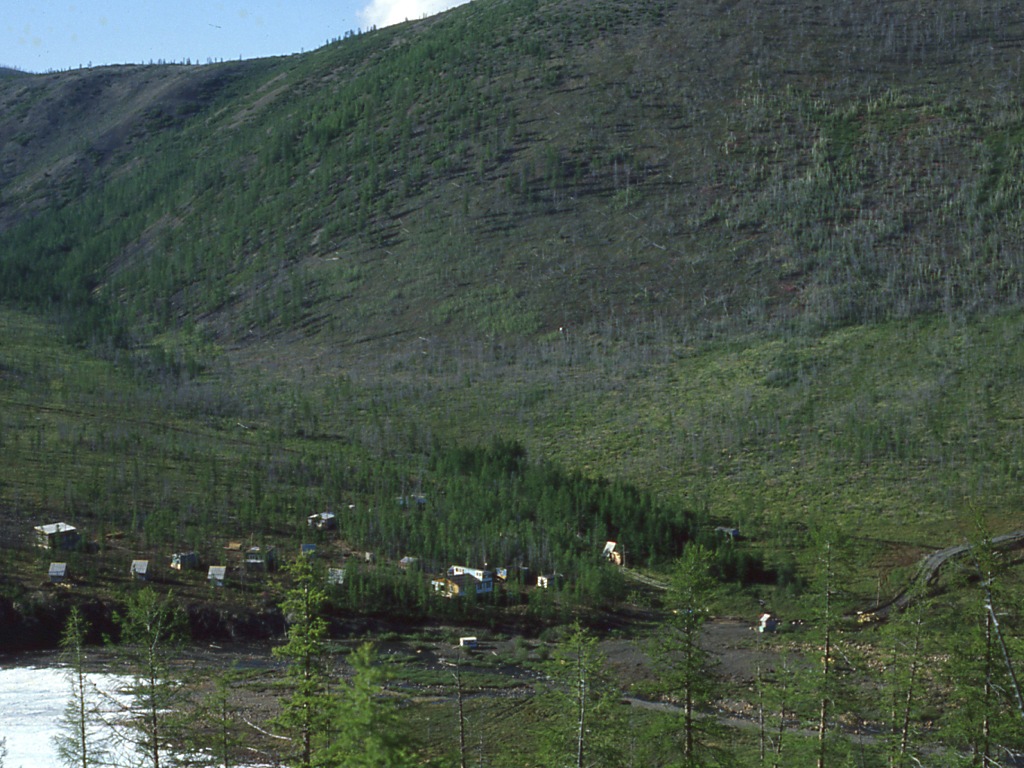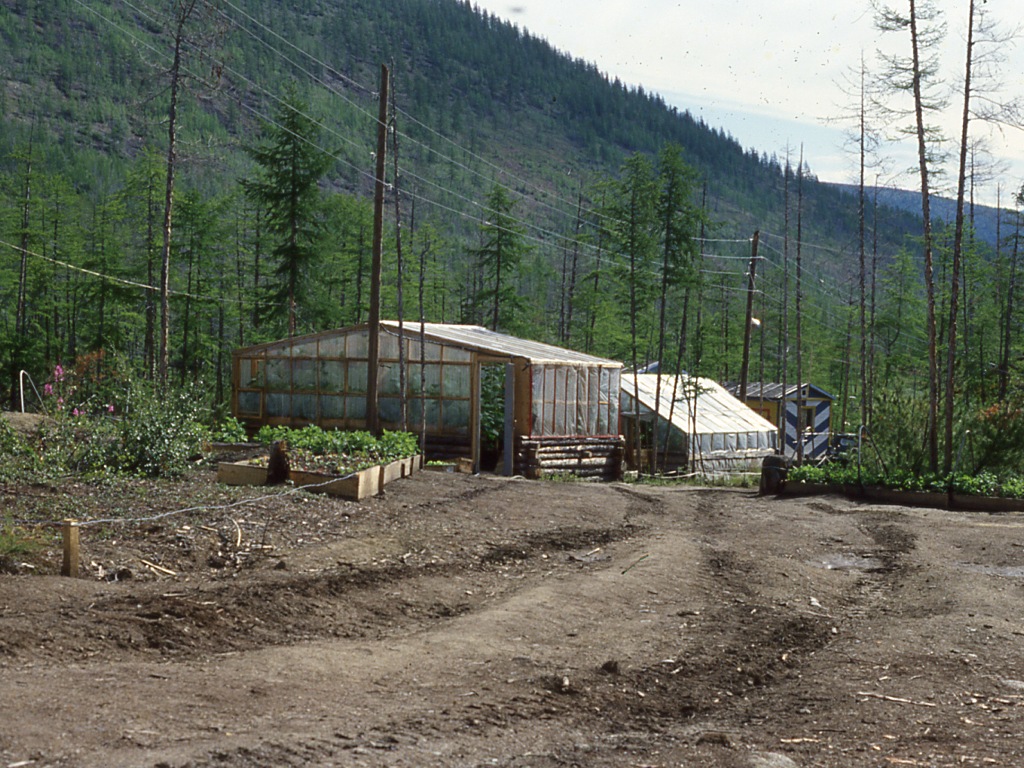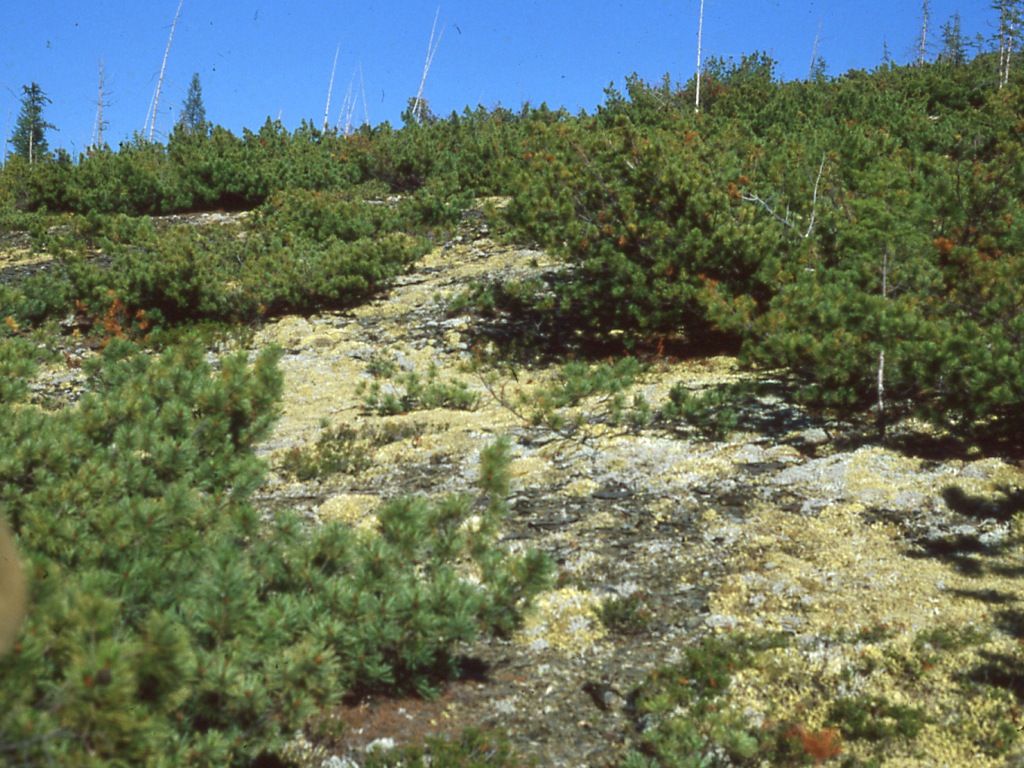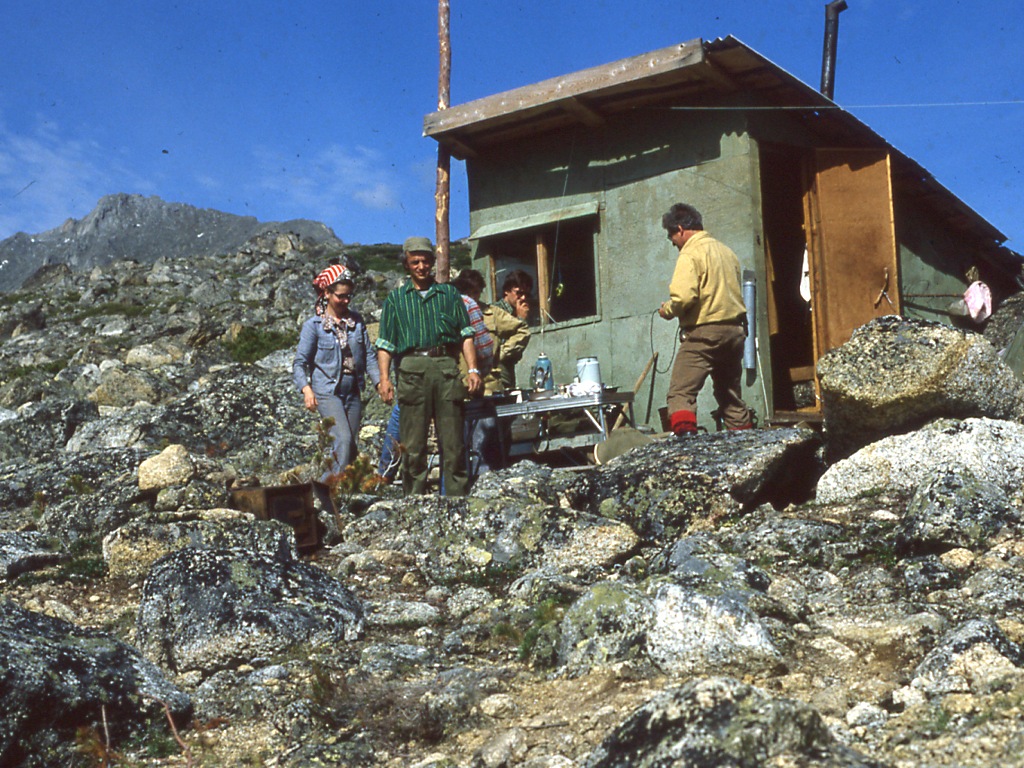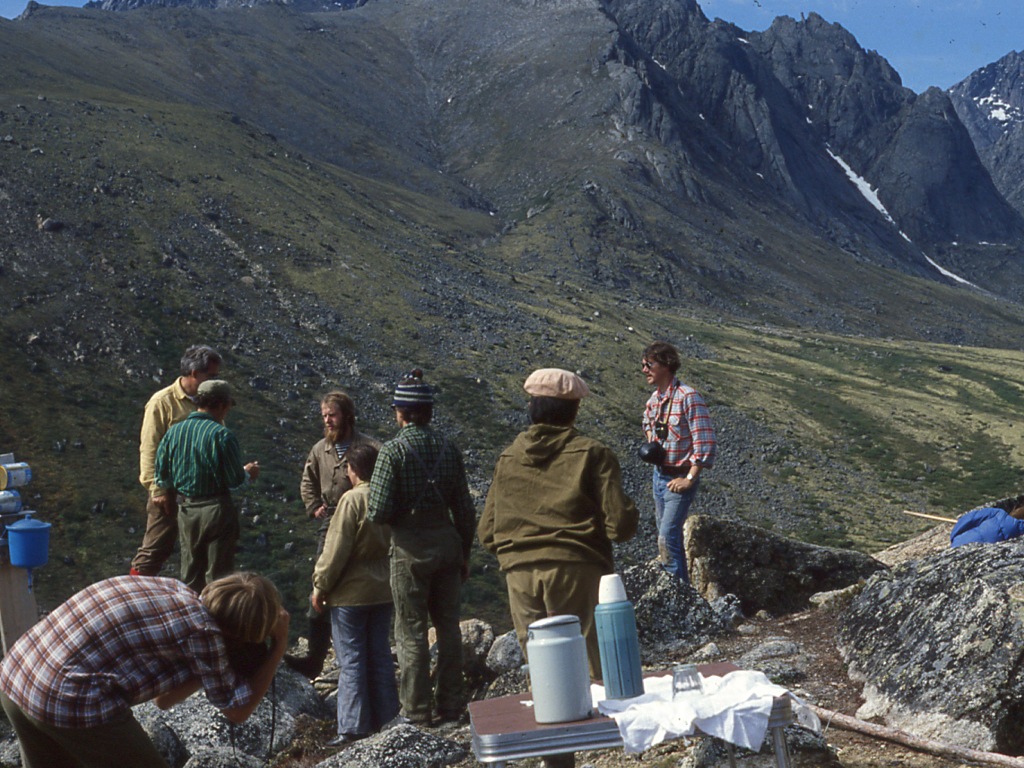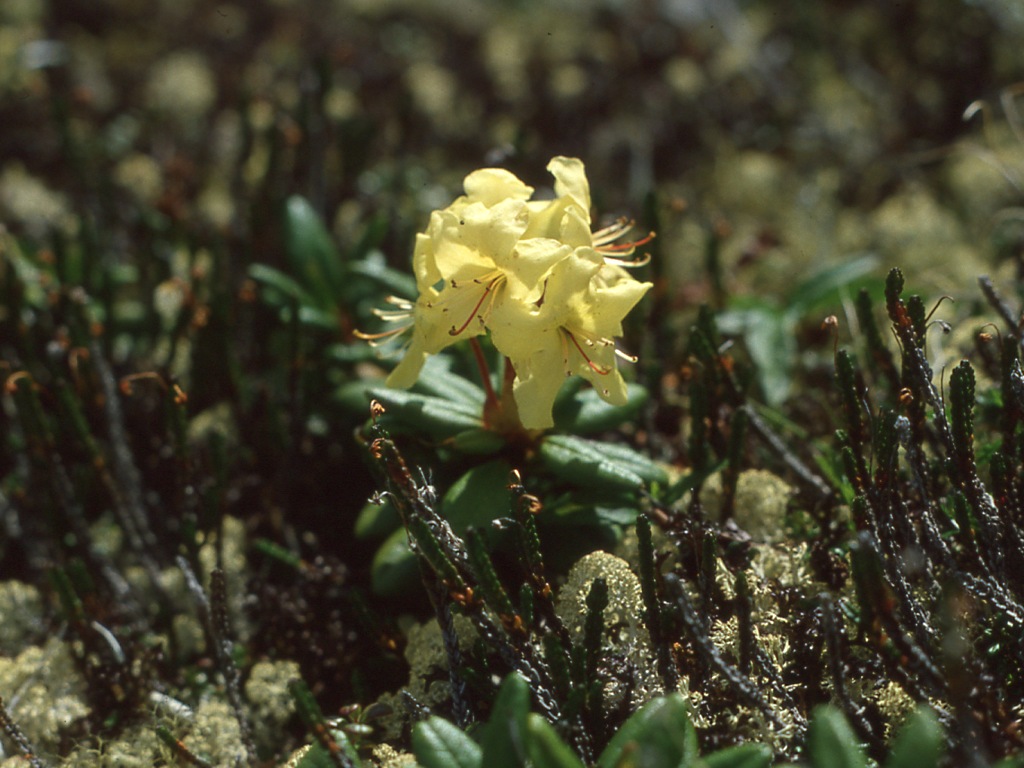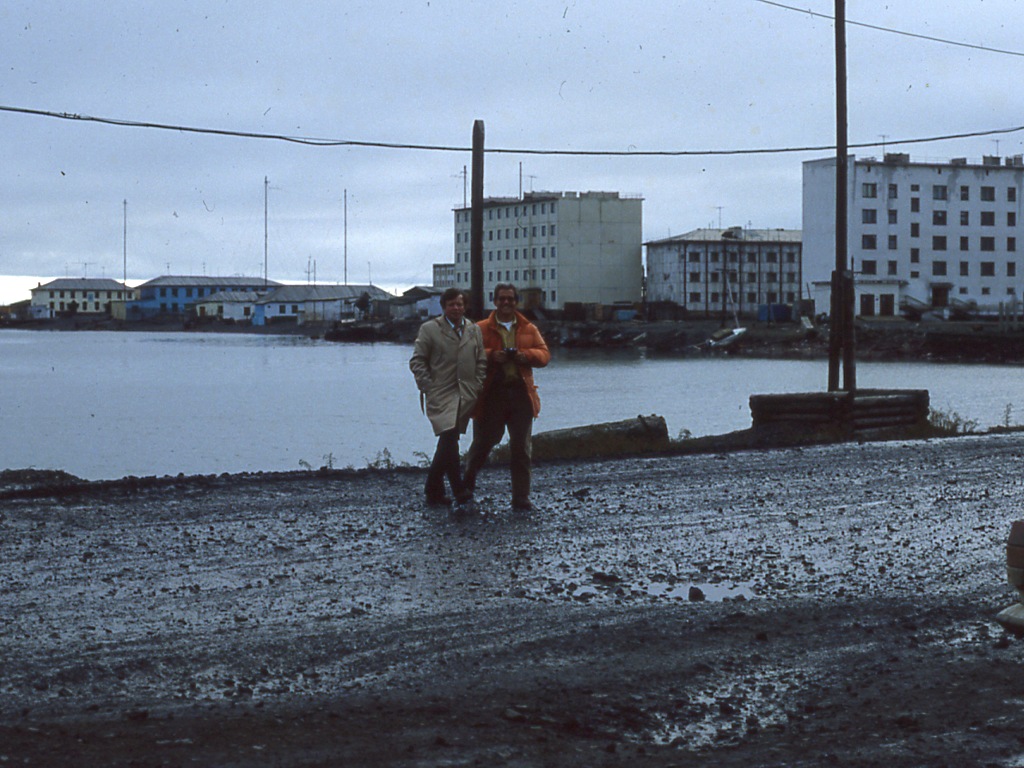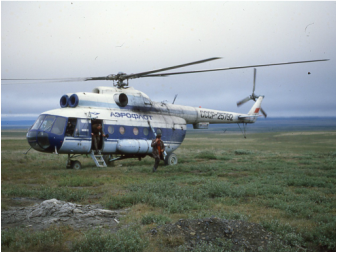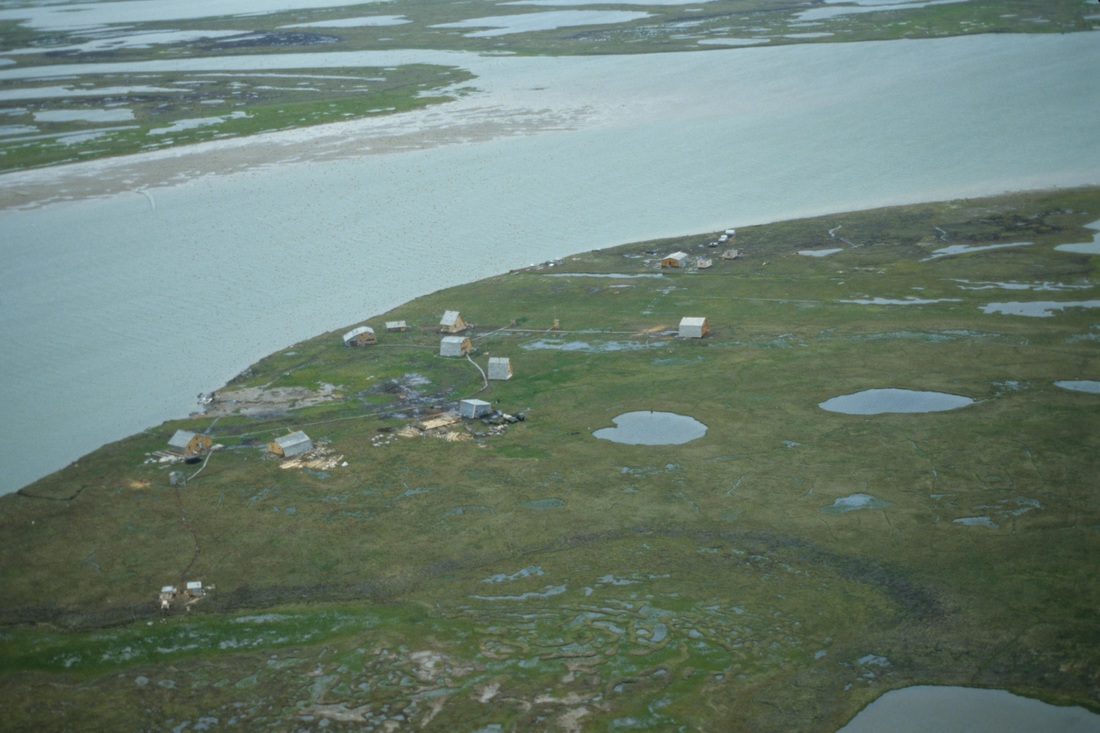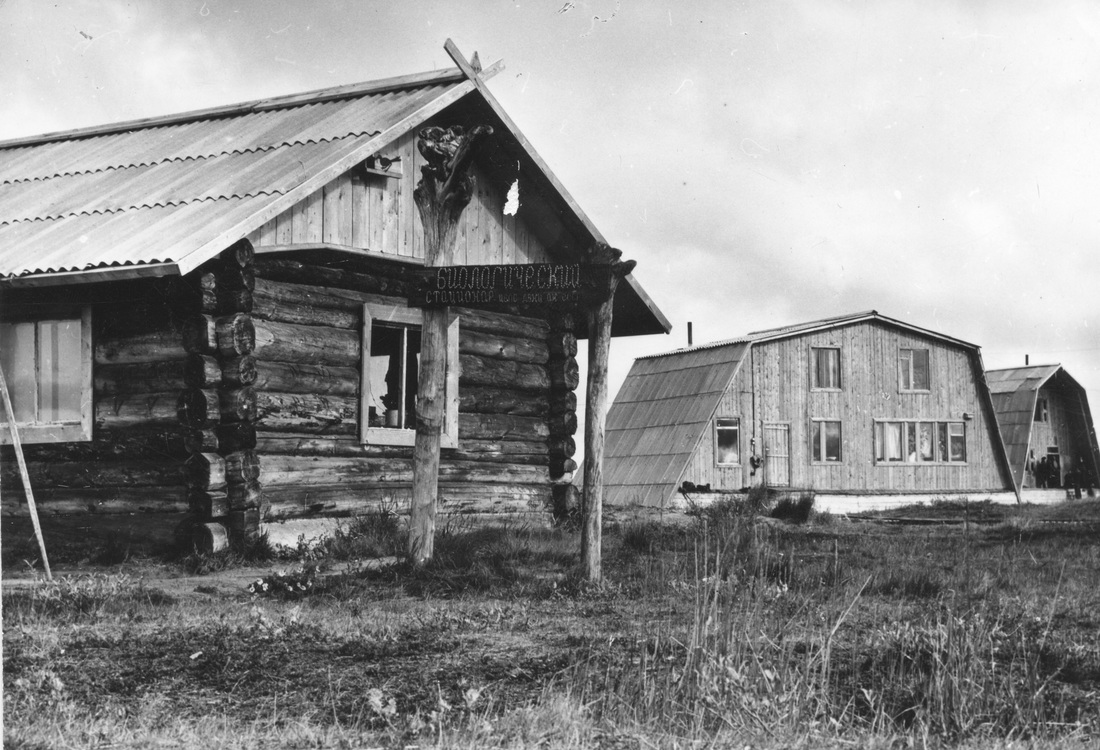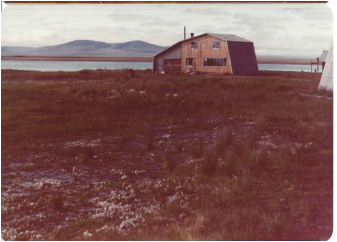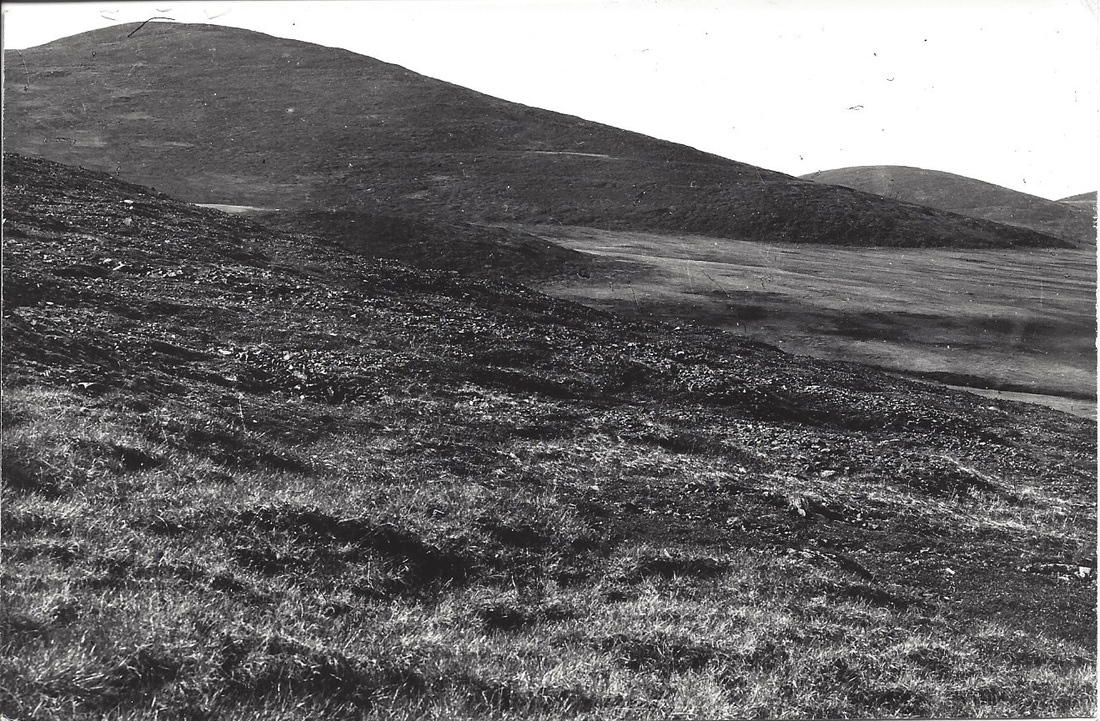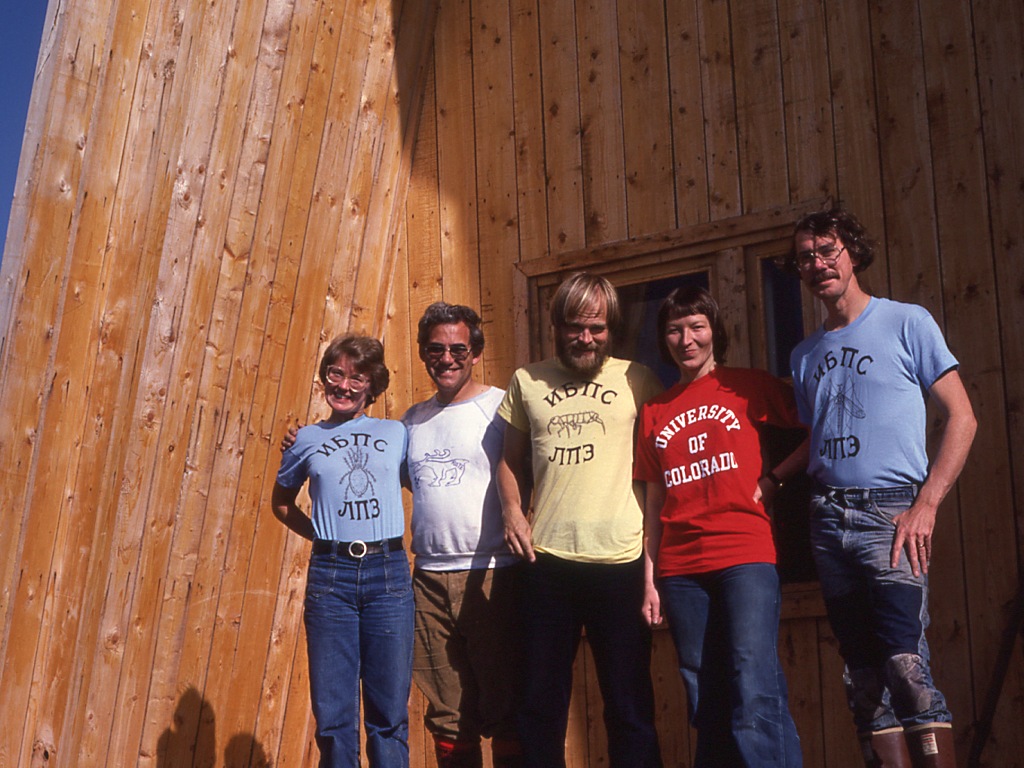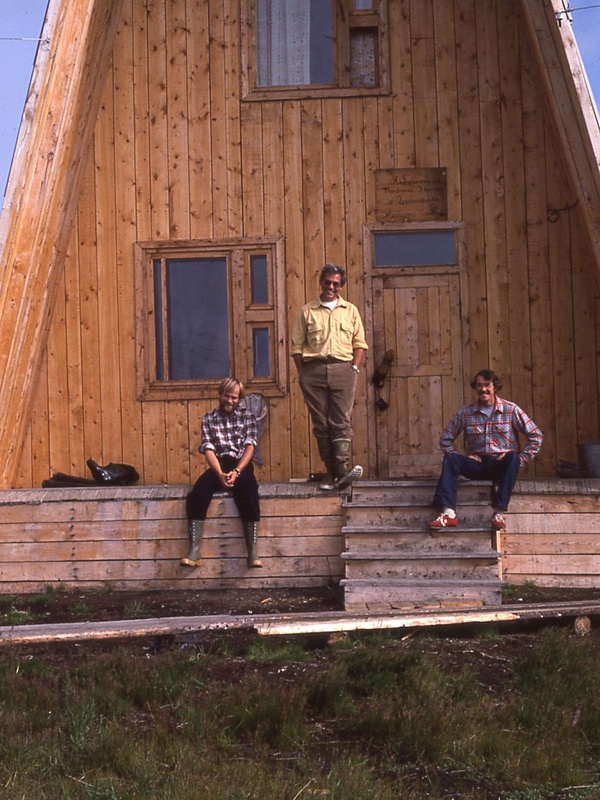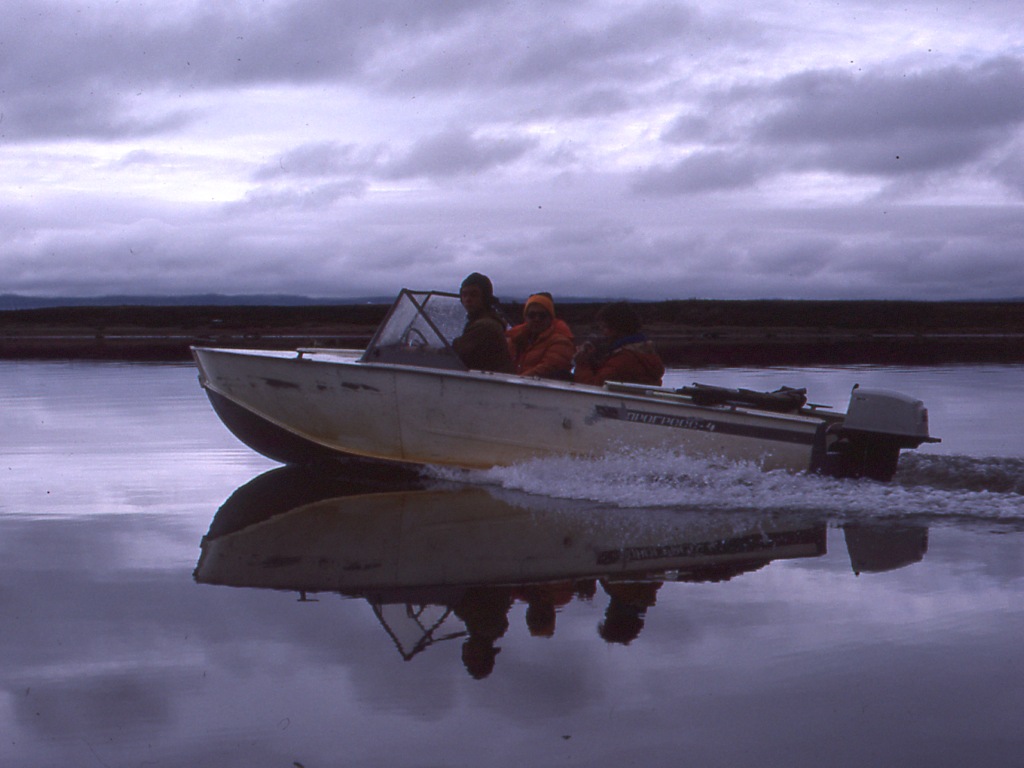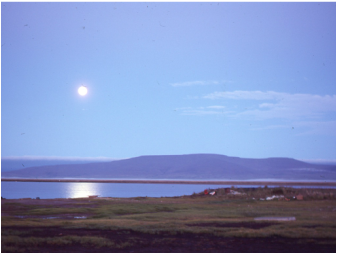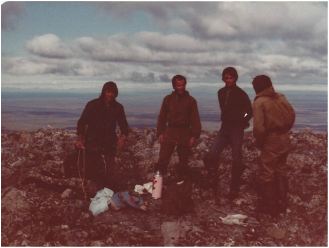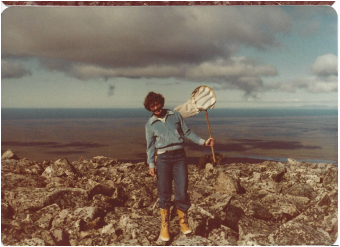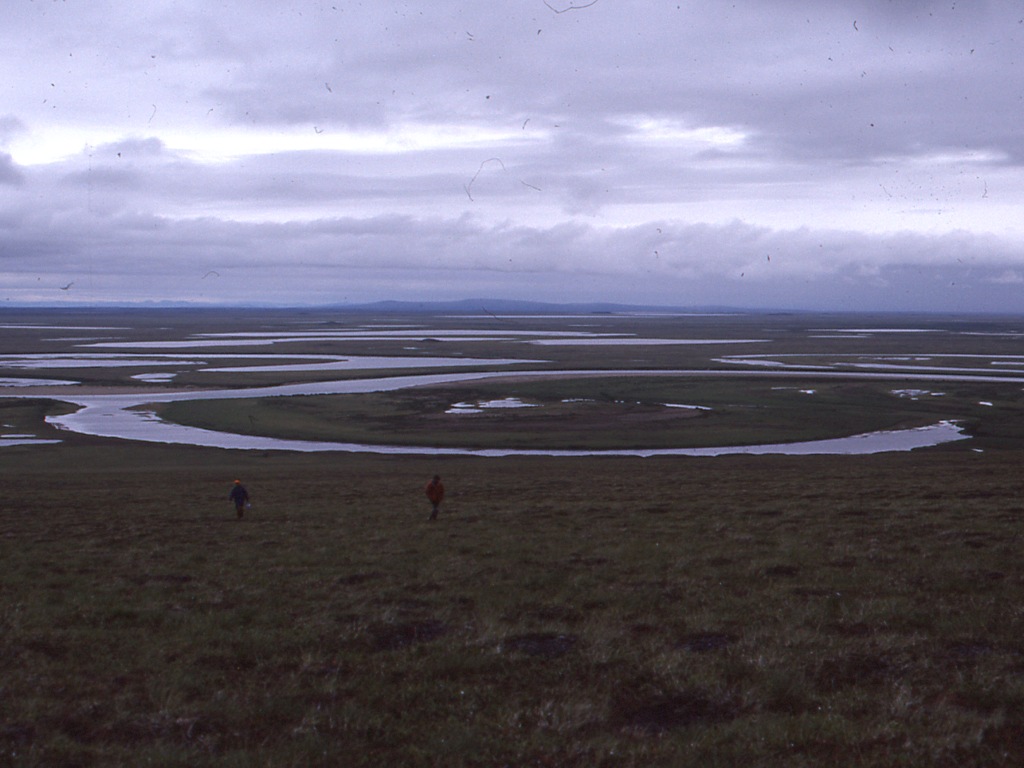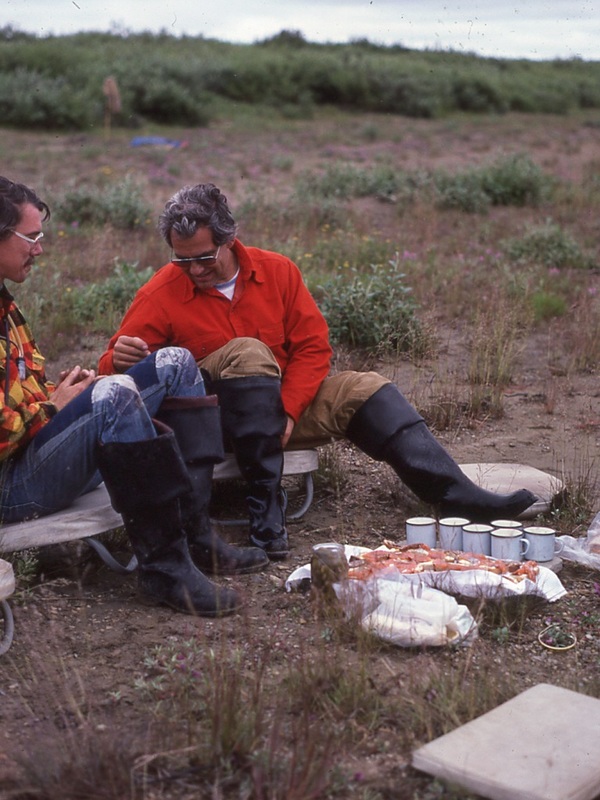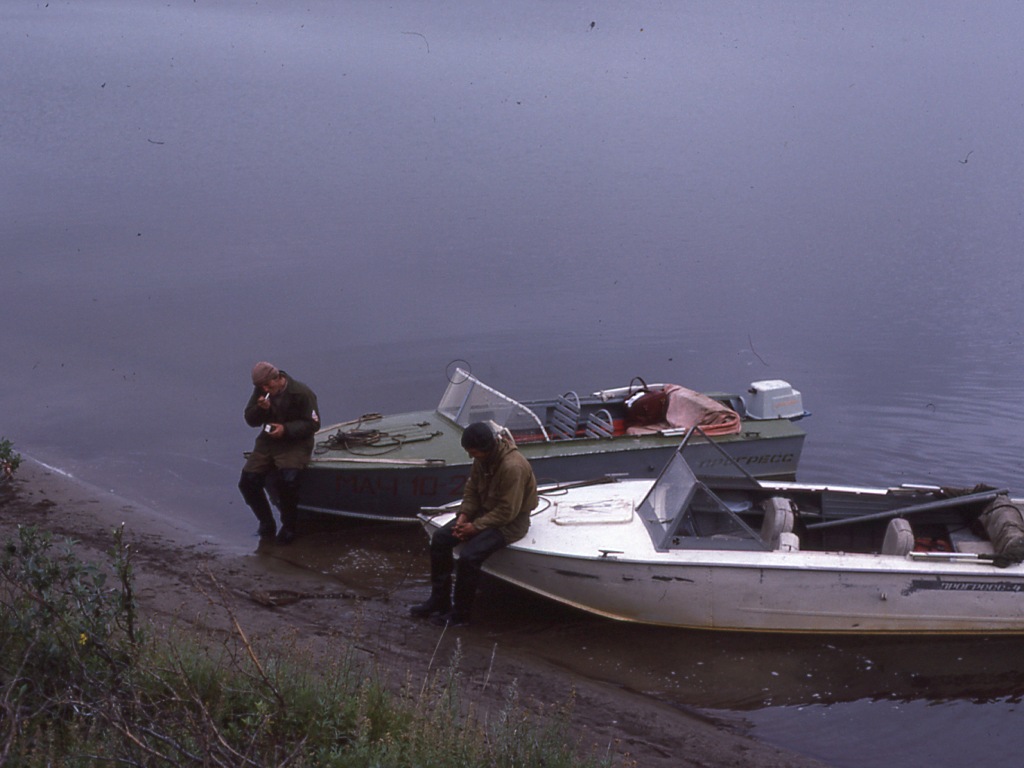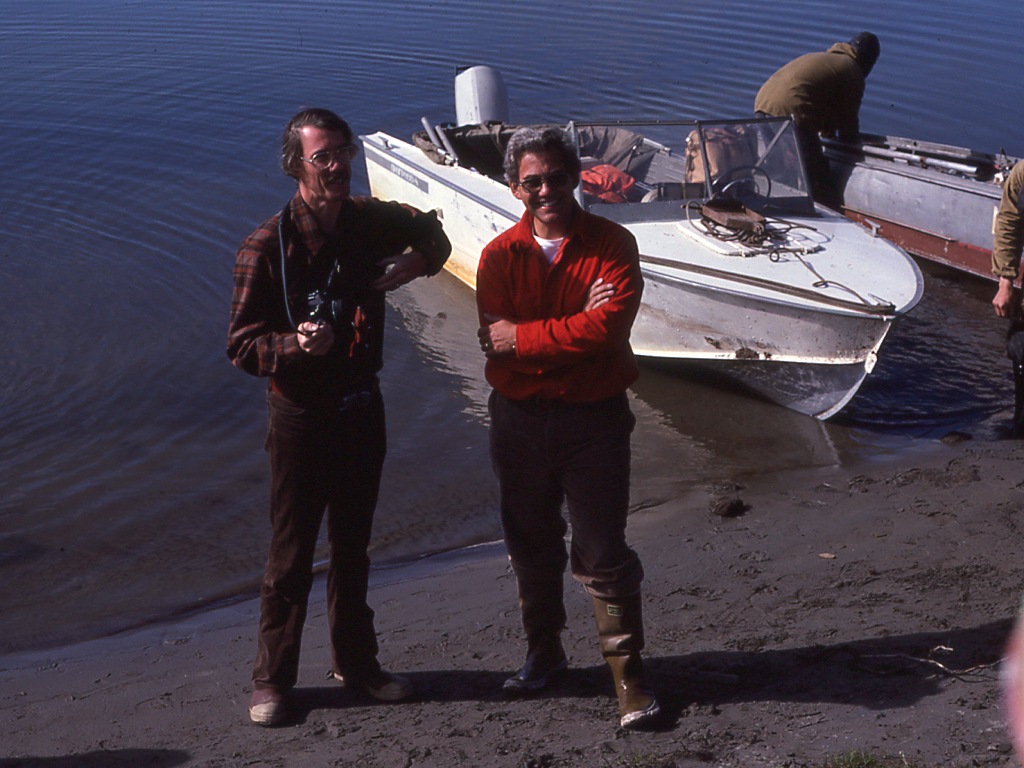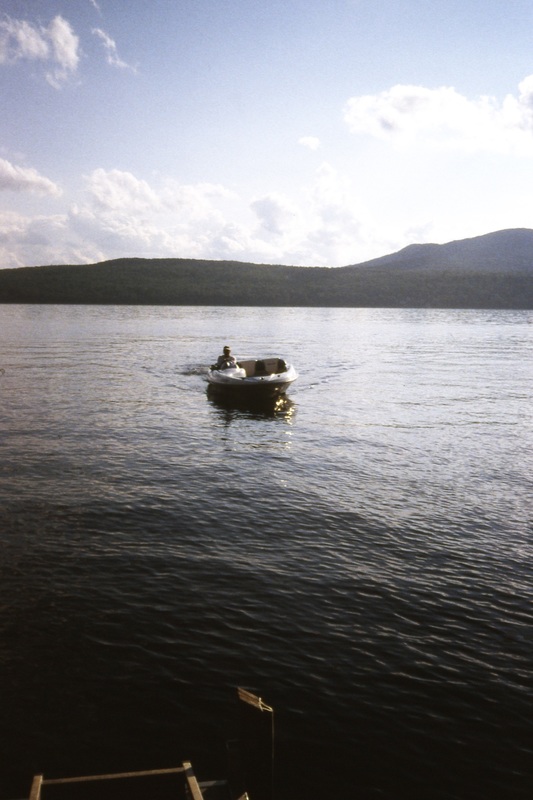|
|
Russian Far East July and August 1979
Serendipity is wonderful, and it was a series of serendipitous convergences that allowed my travel to the Soviet Far East in 1979. I was teaching Biology at John Abbott College in Ste. Anne de Bellevue, Quebec. John Abbott is part of the CEGEP system in Quebec - a series of junior colleges that provide technical degrees, and also are equivalent to the last year at high school and first year in university in other Canadian provinces. I also shared a lab space in the Department of Entomology of MacDonald Campus of McGill University, the Department from which I had received my Ph.D. in 1978. I worked on various soil projects with my old mentor, Professor Stuart Hill. As Cegep teachers though, our summers were free and so when Professor Steve MacLean of University of Fairbanks, Alaska proposed that I join the small group of scientists visiting Russia as part of the USA-USSR Bilateral Exchange Program on Problems of the North I jumped at the opportunity. I first met Steve in 1973 in Fairbanks, Alaska, where he was hosting an International Workshop on the Tundra Biome as part of the International Biological Program (IBP). I was representing the Irish Tundra group of researchers. After I returned to Ireland with my M.Sc. in 1972, I became a Research Assistant at Trinity College Dublin, on the Irish component of the International Biological Program. The IBP was one of the first UN sponsored worldwide ecological initiatives comparing biological productivity in various terrestrial ecosystems. Ireland was part of the Tundra Biome, because of its extensive bogs and peatlands, with a field site at Glenamoy, Co. Mayo. As a Research Assistant I covered all the soil animals not covered by graduate students, and went to Glenamoy monthly to collect samples. For various reasons neither of the Principal Investigators on the Irish Program could go to Fairbanks in 1973 and so, at the last moment, I was chosen to represent the group and present our results - quite a daunting task. But I got along with this community of arctic researchers, fitted in, and because of my M.Sc. work on mites in boreal latitudes, had an expertise that was in demand. When I started my Ph.D. research on Mite Biodiversity in Arctic North America, of course I contacted Steve about the possibility of sampling for mites in Alaska. Wonderfully, he offered me an all-paid trip to the Alaskan IBP sites in Barrow and Meade River in summer of 1975, as his Research Assistant. Then in 1976, he invited me to join a collecting trip along the Haul Road from Fairbanks to Prudhoe Bay, a transect from boreal forest, through subarctic to the low arctic landscape of the North Slope. On this collecting trip we were joined by Arne Fjellberg, a collembolan specialist from Norway. I was trained as an ecologist, Arne was a taxonomist/systematist and I learned so much from him: how to be a better field biologist, i.e., taking precise notes so that a particular habitat could be revisited, how to carefully catalogue soil samples so that the associated information would be available years into the future, how to look at terrain from a soil arthropod’s perspective, and sample accordingly. A group of Russian researchers had already visited Fairbanks as part of the USA-USSR Bilateral Exchange Program; but of the four of us visiting the Russian Far East as part of the USA contingent, only Steve was American. Professor Pat Webber from University of Colorado was a botanist, originally from England. He did not as yet have an American passport and was travelling on his English one. Arne was on his Norwegian passport and I was on my Irish Passport, as my Canadian citizenship was being processed as we were getting visas for the Russian trip. I think the media in Magadan and other places were disappointed, as they really wanted to meet Americans; Steve was the only representative. Steve wanted to bring specific expertise with him to the USSR and I was lucky that he included soil arthropods and that he knew and had worked with both Arne and myself. And so began a quite amazing field trip. Read on. July 13 1979 Dear Mum and Dad, I’m sitting here waiting for special delivery of $1800 so I can go and buy my ticket to Russia. Our Russian visas have been issued and will be sent by courier to the Professor in Colorado who will meet us in Tokyo. I’m flying Montreal - Vancouver - Tokyo - Niigata - Khabarovsk (which is just about 600km north of Vladivostok). From there we fly internally to Magadan, west of the Kamchatka Peninsula, which is subarctic. I need to get my ticket today because I need a Japanese transit visa and they won’t issue that without the ticket. Added to which our phone is out of order, Bell telephone technicians are on strike, so all these transactions, plus a fortune in calls to Alaska have been done via pay-phones! July 20, Magadan Dear Mum and Dad, Well this is certainly the most amazing trip I’ve ever been on. At breakfast in the hotel in Tokyo I met the third member of our group, Professor Pat Webber, University of Colorado, Boulder, who was without his luggage - rather upsetting, as we needed to be in Khabarovsk on the Thursday so as not to upset the Soviets. Pat Webber was the supervisor of Vera Komarkova, the woman who climbed Annapurna, and who was with Steve MacLean, Arne Fjellberg and myself on the trip along the pipeline. At 9AM we met a Japanese collembologist, Dr. Tamura, who wanted to work with Steve in Alaska. He was absolutely charming, but with little English, nevertheless he was very helpful for finding us times for going to Niigata. We all went to a fabulous tempura lunch, with Dr. Tamura doing all the ordering of course. Absolutely pouring rain all day in Tokyo. Steve and I decided to take the afternoon train to Niigata; Pat would take a later train, hopefully after finding his luggage. Dr. Tamura brought us all to Ueno Station, arranged tickets for us, and waited until the train pulled out of the station. The train journey of 4 hours was fantastic. It took well over an hour to leave Tokyo. Everyone seems to live in the tiniest houses and apartments. We didn’t see gardens for ages, just plants and bonsai trees on the smallest of balconies. After 3/4 hour some of the houses had small gardens of intensively cultivated vegetables or packed trees. Further out from central Tokyo people had small gardens with rice and vegetables. Its intensively cultivated everywhere, even under the electricity pylons, and right up to the front door step; I saw one tiny lawn in the 4 hour trip. Then we passed through the Japanese alps. Its very like Switzerland except the mountains don’t seem to be as high and they are so covered by a profusion of plants that they look like velvet. There were small affluent villages in the valleys, many ski resorts, and again, each family with their rice and vegetable plot. Most people seemed to be on bikes or motorbikes, not so many cars. In the lowlands around Niigata which is a large fishing port there are more extensive rice paddies. We passed many orchards on the trip, but only one animal - a goat. In Niigata we stayed at The Niigata Hotel, a smashing place and half the price of staying in Tokyo. Woke at 4AM on Thursday morning and watched the city wake up. Niigata must have been partially destroyed during the war as the central core is very new and westernized, but radiating out from that were the old tiny streets. Heard Pat Webber arrive into Steve’s room at 5.30 and Steve and I went for a walk about 6AM. It was already 22C and the baseball players and golfers were already out practicing. We went to the old part of town and walked tiny streets. Little old women were out washing their steps and bowed low to us as we passed, as we did to them. Little old men were out watering their bonsai trees and the school children, all in uniform, were passing by. Most shops were open by 7AM and people were out selling cabbage, egg-plant, corn etc. on the streets by that time also. Most people travelling were on bicycles, all no-speed versions with enormous baskets in front and carriers behind. It would have been nice to walk these streets for days. We returned to the hotel for an enormous breakfast. Poor Pat had just 1 hour sleep, but he had got his luggage. We were at the airport by 9.15 and checked in for our flight to Khabarovsk at 11AM. We had pre-ordained seats on the flight - I was beside a Japanese who talked to himself the whole trip. The flight was uneventful, we had a cold lunch at noon, which was just as well as our next meal was 11 hours later. We couldn't take photos of Khabarovsk airport but it is the oldest town in Siberia - 100 years old, and is just across the Amur River from China, so we could look at China from the air. The airport building looks like a run-down country house, with a large statue of Lenin outside Lenin’s picture is hanging over one of the hangers and is evident in most people’s houses. The Soviets at Customs weren’t interested in anything except Visas, and we had to declare all foreign currency and precious metal going into the country in writing, to make sure we come out with the same. Met by Tanya, an absolute doll, who is our interpreter.She is 38, Ukrainian, and just about the most open friendly person possible and she had brought us all flowers. It was decided that Arne and I would go to Magadan immediately, and Steve and Pat would stay in Khabarovsk overnight. As Khabarovsk is a beautiful town, I envied them as I only saw a small part of it going to the hotel to pick up Arne Fjellberg, the fourth person in our group. We took the Aeroflot flight 3.5 hours to Magadan. Magadan airport is 56km from the town so we drove through hilly subarctic vegetation going to town. Magadan started as a prison town during the tsarist period and became really built up about 40 years ago. We are staying in very comfortable rooms in the hotel in town. Even though it was 11.30PM we had a smashing meal of fried chicken, potatoes, tomatoes and cucumber salad, beer and thick apple juice. Had breakfast with Arne the following morning of tea, smoked salmon and cheese on bread. this is a big salmon area and they serve it smoked in thick slices. Tanya picked us up to go and meet the Director of the Institute for Northern Studies, Dr. Bermann, a charming man. We got across to him that we weren’t interested in cultural artifacts, just interested in getting soil samples from the subarctic. However we first went to the Magadan Geological Museum, which is most impressive. All the decorations, etc. and maps are done in inlaid wood. A frozen baby mammoth was found close to Magadan in 1972 - 40,000 years old with the flesh still fresh. It is on exhibition in London, but we each got a photo of it. After a large lunch, same as breakfast, which neither of us could handle, we finally went to the field and got some samples. Arne is marvellously one-track minded and whereas I would feel I was putting people out, he pushes on, even though we were chaperoned by the interpreter and Vice-Director of the Institute, who had NO interest in soil biota. When we returned we walked part of Magadan town together and tonight we have a banquet supper at 11PM. Tomorrow we go to Aborigen, a 10 hour trip by lorry. Aborigen is in the mountainous tundra area of Chukotka and we will stay there for 8 days. Aborigen Station, Kolyma Highlands 29 July 1979 We left Magadan at 10AM after an excellent breakfast. Steve was interviewed by TASS news agency before we left. The reporter skimmed over the scientific component of our trip and started to ask about SALT II! We had been told that the trip took 12 hours. but we knew the road was only 500km long, so thought this was Russian exaggeration - but they were right. The road is gravel the whole way and pot-holed, with many cars and trucks broken down en-route, and the Russian drivers performing miracles on broken axles etc. The scenery along the route though was spectacular, a bit like northern Canada. Except that in Canada subarctic trees are primarily black spruce, here they are larch. this area is very mountainous and above the larch on the upper slopes were shrub-like pine trees - Pinus pumila - indigenous to Far East, and just fabulous - the perfect garden tree. At 4PM we had our lunch at a village called Ust-Omtchug. They hadn’t been expecting us so early, so we spent an hour walking the village while they prepared lunch. Restaurants also serve as taverns in many places, so they have peculiar opening hours. Ust-Omtchug is an ugly dusty town, with no effort made to grow flowers etc., its obviously a hard life in this area. There is one general store with the Kvas tanker outside. Kvas is a very light beer made from bread and water sold on the street from these small tankers. You either bring your own container to buy it or drink it from a mug that the seller provides. It is made in the tanker from which it is sold. Lunch was a sumptuous affair - amazing smoked salmon, sardines, tomatoes, cucumber and lettuce. then borscht soup - basically a mixed vegetable soup. There was another course which we had to decline and then there were buns and tea. There was vodka, wine and mineral water to drink - we stuck to wine and water. We left there at 6PM and drove non-stop to make the ferry crossing of the Kolyma River - which is very large, like the Yukon. The ferry was an amazing affair, basically 2 tugs with a wooden raft between them and space on the raft for 3 trucks. We arrived at Aborigen station at 11PM. This is a year-round field station, built in the last 2 years mainly by the researchers themselves. Its in a fabulous setting - set in a valley in the mountains which are part of the Kolyma Highlands, where the Kolyma river starts. There are 40 people at the station. All that work here year round are married and the rest are summer students, and there are about 10 children. The camp consists of about 20 cabins scattered through the forest - many like the one Tanya and I share, a 2 bed cabin with table and stove. The 3 fellows are in a large spacious cabin. There is a basic dining room that seats 20 and so all meals are in shifts, about 6 small labs, and a large 2-story cabin that they call the “White-House”. This is the home and lab for 2 couples and Dr. Bermann and his wife. Then there is a shower room with hot water a once-a-day luxury and a sauna which is fired up on Saturday, also an outhouse. A stream runs by the camp and part of it goes by a small cliff just by my cabin, so I can wash face, teeth and clothes in it in the morning. The water comes from a permanent snow-field and is glacially cold. There are two greenhouses in which they grow tomatoes and cucumber and running through the camp are flatbeds with lettuce, beets, radish, onion; all growing at a latitude of extreme northern Quebec. When we arrived we had a sauna, shower and meal with many in the camp. Got to bed at 1.30AM. Up at 7AM which is a good time to walk the field station as no-one is up before 7.30 or 8AM. Breakfast is at 8.30 and was noodles and sausages, bread, butter, jam and tea. These last 4 items remain the same, but breakfasts have been milk pudding, rice pudding, dumplings and sausage, salad, dumplings with garlic and salad, buckwheat porridge. Lunch at 2PM is their main meal - usually borscht and some meat dish, but except for day 1 we have been out collecting and have missed it. Tea at 8PM varies from cold soup, salad, sausages, fantastic cheesecake, hamburger or sausages and noodles. Fruit is absent from the diet, but there is loads of tomato and cucumber salad and of course wild blueberries. The weather was glorious - the whole time there we had 5 minutes of rain. The first day Dr. Bermann took us for a hike both morning and afternoon to visit their study areas. Next day we went to see their alpine tundra site at 1500m. They insisted we go in the camp caterpillar which is a tank without the turret. It is enormously powerful and gouges a path out of the hillside. About 10 of us went up, it was a very exciting trip as the driver was a real macho type, so we had every bone in our bodies rattled.We walked from there to 2500m. The scenery is just spectacular, amazing vistas with no evidence of people even though there is much gold and tin mining in the valleys.You really get the impression of the vastness and resources of this country, and added to that the kindness and hospitality of the people. About 6.30PM we drove down the mountain which was just like driving down the Reek in a caterpillar and more exciting than loop-the-loop. Since the first day we have been able to take off on field trips by ourselves and get some concrete work done. We usually work in the Camp for a couple of hours after breakfast and then take off until 7PM with a lunch - dark bread, cucumber, tomatoes, cheese and mineral water. We have been up and down the mountain we did by caterpillar twice on foot. One day it was so hot and sunny that Steve got sunburned and my nose was raw. The mosquitoes are appalling though, my hands and arms are covered with bites, and we are through almost all our repellant, so I’m staying covered up even though dying of the heat at times. Friday was the day of the big banquet dinner for us and when I really felt like Alice in Wonderland. We were told it would start at 8PM. Steve had not forewarned me to bring small presents or to bring a cocktail dress. I brought nothing with me but field-wear and my most flashy attire was a pair of cords! Of course at breakfast the guys were joking about what they would do to help me with my predicament - e.g., a cheesecloth sari! By 8PM we were all ready, like the 4 Stooges, but everyone was still working. We thought we had the day wrong, but the festivities started at 10PM. We had a superb meal - beef stroganoff, smoked salmon, followed by cake, all downed with vodka and wine. I have found that the secret is to accept a small amount of vodka, down it in one gulp (Russian style) at the first toast, and then fill my glass with white wine which is always the same brand of Bulgarian, so that I can graciously refuse any more vodka. It was just a fabulous meal with excellent company - 25 of the camp people. Then the dancing and singing started - I was up on the floor the whole time. I slipped out on the quiet to go to bed at 2.30PM as we wanted to go into the field the next day. We are leaving here tomorrow and the 4 of us would love to stay on for another week at least. Life is very comfortable here, everyone is so kind, we have got into a routine and the scenery is superb. Tomorrow we repeat the 12 hours drive to Magadan and leave at 4AM the next morning for Chaun Bay - an amazing experience. Chaun Bay, Chukotka 7 August 1979 This will be my last chance to get a letter out of Chaun Bay, as Pat and Steve are leaving here on the 10th whereas Arne and I are staying on for a further 2 weeks. Pat is Director of the Institute of Arctic and Alpine Research in Boulder, Colorado and Steve is Chairman of Biological Sciences at University of Alaska, Fairbanks, so they both have large academic responsibilities to return to. Our last night in Aborigen Pat showed slides of Colorado after supper and Steve gave presents. I gave a scarf to Sasha, the female in the camp who was most kind to me and one to Tanya, our interpreter.Then we went to the White House for drinks, and had to draw a cartoon of our stay and sign it to add to the guest book for the Station. Everyone agreed that I’d added 2 new words to the Station - “fantastic” and “amazing” and certainly these adjectives were more than deserved by the Station and the people there. Next morning everyone was around for our leave. There was a building for soil extractions - the ‘Dom Eclector’ and we all gathered round for the final photo. Then we had the long 12 hour drive back to Magadan. There were 11 of us in the jeep and we rattled and bombed our way, across the ferry and onto Ust-Omtchug for our meal, which was fantastic as usual. Then another 6 hours to Magadan. We had a flight the next morning to Chaun Bay, so we had a quick meal in the hotel, repacked and had about 3 hours of sleep. A bus took the 5 of us on the hour journey to Magadan airport - we four and Vitus Leonovich, the Director of the Institute of Biological Problems of the North. He arranged all our trip here, and though he’s overall Director of all the Stations and labs in the North, Chaun is his personal baby and his family are there during the summer. He is a prince among humans, looks like Uncle Paddy and is enormously kind. At the airport we found the flight delayed for 2 hours so we snoozed in the bus. The Magadan-Pevek flight is 4 hours, with a 1/2 hour stop at Siemchan, an agricultural town in the valley of the Kolyma river. As usual we were brought onto the plane first and then there was a scramble by the rest of the passengers for available seats - melons, sausages etc. got hoisted onto the luggage rack area (open rack), and there was no readout of safety precautions!There were 3 air hostesses who slept the whole trip and we certainly got nothing to eat or drink. I swiped all the toilet paper from the toilet - its an item of premium value in the USSR. The airport building at Siemchan is a magnificent log structure that must have been a dacha at some stage. I would have liked a photo but that is prohibited. Arrived in Pevek which is right on the Eastern Siberian Sea at the mouth of Chaun Bay. Because of Vitus we were met at the airport by (in order of rank) the First Secretary of the Communist Party, the Mayor of Pevek and the Director of the Airport. Weather was too bad to leave immediately for Chaun, so after tea and biscuits in the VIP suite of the airport we were brought to a hotel. Pevek is amazing for a town so far North. It is the size of Castlebar, a fishing town and has loads of 6-story building, all built on piles driven 9m into the ground because of permafrost. There is no town as extensive as Pevek as far north in either Canada or Alaska. We had a magnificent meal at the hotel with the First Secretary and his entourage - salad and grilled fish as an entree, reindeer tongue soup and then reindeer calf liver and potatoes, all washed down with champagne, Pevek distilled vodka and wine. As we all had to give toasts, I was being very sober, and drinking little. After a siesta, we all, including the First Secretary and entourage, now joined by a reporter from Izvestia, went out to the tundra so we could take samples. Now, can you imagine that happening at home - the local mayor and party rep. running around with a group of nuts with butterfly nets! While we were sampling the helicopter that brings people from Pevek to the Chaun Station buzzed us and landed on the tundra beside us to say that the weather had cleared and that we should get ready as fast as possible. We rushed to the hotel, packed anything we had unpacked and rushed to a field at the edge of town where we were picked up in an enormous helicopter with enormous fuel tanks both inside and outside. Our last image of Pevek was the first Secretary waving us goodby as we took off. These transport helicopters are amazing affairs and both Arne and I took turns riding in the cockpit with the 4 pilots - what an experience. We arrived at the Chaun Station late in the afternoon; it is set on lowland marine tundra on the banks of one of the rivers at the Southern tip of Chaun Bay. The area is disappointing scenery-wise in comparison with Aborigen, but the camp is more beautiful - designed and built by the scientist who are mainly parasitologists. There are 4 laboratories with sleeping quarters above. Arne, Steve and Pat sleep above our lab, but I was given a separate room by myself with a reindeer skin sleeping bag, above another lab. There is a dining room/ kitchen, a log cabin used by the Director and his wife, a sauna with a sun-room on top and various scattered building for rabbits, pigs, generators, outhouse. The cooking is superb, though fruits and vegetables are almost absent. Our diet is very high in protein because of the parasitologists - we have reindeer or some wild game everyday, magnificent fish soup, and raw fresh arctic char every meal. there are about 35 in the camp, including children. The researchers are very different from those in Aborigen; most are Estonians or Lithuanians and are very westernized. the women are very figure conscious etc. Everything seems more refined than at Aborigen. We had a dinner party when we arrived with more champagne, wine and vodka - super eating and then dancing afterwards. While here we go for a trip up or down the river or onto the nearest and only mountain every second day. As Chaun Station is on an island in the delta, these trips are all by boat. The boatmen and the general expeditors of everything are a couple that live here year round and their son. All three are the type that epics are made of and you know that if the flood occurred they would save us all. They boat us around the place with a certain look of amusement. The round of activity here is breakfast at 9AM (noodles in milk, or semolina, or pancakes with jam and super bread, raw fish); lunch at 2PM (soup, either vegetable or fish, then game, either reindeer, duck or goose with rice and dried fruit compote); supper at 8PM (pancakes or raw fish, or grilled fish of cold fish, or grilled duck etc.). Most people work until midnight 7 days a week. Big events are: arrival of a helicopter, a party and the weekly sauna. The sauna is a ritual. For the men it is a macho affair with much beating of the body with fresh oak or birch branches. For the women, who have the sauna separate from the men, it consists of rubbing the body all over with a block of salt to open the pores, then a spell in the sauna; then a rinse, and sweetened, activated yeast is put on the face and neck and everyone sits around talking and rubbing this in for 10 minutes; then another rinse and honey is rubbed on the face and neck and massaged in for another 10 minutes. Then, finally into the sauna for as long and hot as you can stand! Tokyo, Thursday August 30, 1979 Well back to Chaun Bay. Steve and Pat left and for the next 2 weeks Arne and I worked away on getting and sorting material and working on the wealth of material we had collected at Aborigen. There was a party the night before Pat and Steve left which was an amusing affair. As usual the food was excellent, someone had just killed a reindeer calf which was amazingly tender. The second in command of the camp tried to make a pass at me, which was very old-style. First of all he brought me to the kitchen - I thought it was to help clean up, but no. He had previously herded in 4 of the women in the camp and now intended to have the company of the five of us all to himself. However, Arne was there and he is very deaf when he wants to be and no hints got through to him. What I couldn’t understand was that the other women accepted all of this because the second in command was far from being among even the 10 best-looking men at the Station. All the while he was mooching closer and closer to me - then I got the arm over the shoulder bit, then the arm around the waist, at which point I pretended to need to go to the out-house. I went out and came in another door and went on dancing with the rest, although I told Pat about it. Later the kitchen gathering broke up and the second in command danced with me and began a feel-up routine. But I was saved from having to be rude to him by Pat, who asked me to dance and then danced me out the door! The best day I had at Chaun was when they arranged for us to climb Naitlin - the only mountain in the area. Five of the fellows from the camp were going on a 3 day camping trip on Naitlin, so it suited to bring us along, even though we would be gone just for the day. Unfortunately, Arne had a lousy cold, so decided not the come. The day was the best weather of the summer, so I opted to go and they sent Vitalya along with me to make sure I didn’t kill myself. He’s 20, the son of the station manager, a superb hunter and fisherman, and the most impressive 20 year-old I’m ever likely to meet. If I was going to be dumped in the arctic tomorrow for a prolonged period I’d want either Vitalya or his father as companion, and a gun, and I would be sure to stay alive and well-fed. The only problem is that he doesn’t speak a word of English and my Russian is limited to about 20 words which do not include such essentials in an arctic landscape as “could you please turn your back because I want to pee”. But with hand signals I had no problem. Climbing Naitlin was no more arduous than climbing the Reek, so we went up quite rapidly. But as most women the camp have never climbed it, I subsequently got the name for being a real athlete - if they only knew! However, I was in good shape after Aborigen. Vitalya was carrying our lunch, packed by his mother, who basically runs the everyday affairs of the Station. What a super lunch - an enormous thermos of coffee (the fact that I drink coffee without sugar has added to my reputation!), raw fish (salted for 24 hours before eating), sandwiches, cheese, sausage, cucumber, biscuits; we couldn’t eat a quarter of it. Luckily 3 of the 5 others decided to climb also and finished off what we had left. I sampled at the top of Naitlin and took many photos as it was a magnificent day with the whole delta of Chaun River and other rivers stretched out in front of us. The following day there was a blizzard - icy winds, sleet and snow. Such is the arctic in summer +10C one day, -10C the next. There were fears for the 5 campers. Two of them returned in a couple of days. They had found a fisherman’s hut who brought them back to the Station by boat in the storm. But they had to send a search party out for the three others as the storm continued and they were not experienced campers. Luckily, they were found and were in fine form. Those 4 days of the storm were the only bad weather we had. We were meant to leave Chaun by helicopter on 22nd of August, but there was bad weather in Pevek, so we finally left on the 24th. Leaving Chaun was just as difficult as leaving Aborigen but in a different way. People took longer to accept us in Chaun, but whereas I would love to go back to Aborigen for the fantastic collecting terrain around the Station, I would like to return to Chaun because of the people. From the helicopter we could see people (probably reindeer herders) cutting grasses on the tundra and leaving it to dry - that is the furthest north I’ve seen haymaking, quite an amazing sight. At Pevek the plane was waiting to take us to Magadan. It was sad leaving the arctic and weird landing in Magadan after the 5 hour flight and seeing trees. Tanya, our interpreter met us and we got to the hotel about 11.30PM for dinner. The next two days we got the chance to sample at a subarctic biological station which is in an enormous park called Snow Valley. The area is very pretty and is very popular in winter with X-country skiers as it is only 30km from Magadan. We had excellent collecting and when we returned to the hotel the Deputy-Director of the Institute had kindly arranged for the soil extractors to be set-up in the hotel so that we could extract the arthropods. So now I’m in Tokyo on my way home. I hope to leave today as everything costs a fortune here. Also, I’ve only got my arctic field gear to wear and it is 35C outside. |
